Home> Company News> Achieving Precise Control with Rexroth DFR Control Adjustment for Your Hydraulic System
- AddressTianqiao, Beiyuan District, Jinan,Shandong
- Worktime9:00-18:00(Beijing time)
- Phone(Working Time)0531-8299 9953
Achieving Precise Control with Rexroth DFR Control Adjustment for Your Hydraulic System
NOVEMBER 02, 2022Hydraulic systems are widely used in various industries, such as manufacturing, construction, and aerospace, to provide power to machines and equipment. Precise control adjustment is crucial for ensuring optimal performance and efficiency of hydraulic systems. Rexroth DFR control adjustment is a technology that allows for precise control adjustment in hydraulic systems.
Rexroth DFR control adjustment is a reliable and efficient technology for achieving precise control in hydraulic systems. It allows users to adjust the pressure and flow rate of hydraulic systems, providing greater precision and control. This technology is essential for various industries where hydraulic systems are utilized, especially those that require high precision and accuracy.
In this article, we will discuss the function and purpose of Rexroth DFR control adjustment in hydraulic systems. We will also cover the factors that affect control adjustment with Rexroth DFR, a step-by-step guide to adjusting your hydraulic system with Rexroth DFR, and troubleshooting tips. Additionally, we will discuss the advantages of using Rexroth DFR control adjustment for achieving precise control in hydraulic systems. By the end of this article, you will have a comprehensive understanding of Rexroth DFR control adjustment and how it can improve the performance and efficiency of hydraulic systems.
Understanding Rexroth DFR Control Adjustment
Rexroth DFR control adjustment is a technology that allows for precise control adjustment in hydraulic systems. It is a closed-loop control system that uses sensors and feedback mechanisms to adjust the pressure and flow rate of hydraulic systems. The DFR in Rexroth DFR stands for Dynamic Flow Regulator, which is the key component involved in the control adjustment process.
The purpose of Rexroth DFR control adjustment is to provide precise and accurate control of hydraulic systems. It allows users to adjust the pressure and flow rate of the hydraulic system in real-time, ensuring optimal performance and efficiency. Rexroth DFR control adjustment is ideal for applications that require high precision and accuracy, such as in the aerospace and defense industries.
The components involved in Rexroth DFR control adjustment include the hydraulic pump, the DFR valve, the pressure and flow sensors, and the controller. The hydraulic pump provides the power to the hydraulic system, while the DFR valve regulates the pressure and flow rate. The pressure and flow sensors measure the pressure and flow rate of the hydraulic system, while the controller processes the sensor data and adjusts the DFR valve accordingly.
Rexroth DFR control adjustment operates based on a closed-loop control system. The pressure and flow sensors measure the pressure and flow rate of the hydraulic system and send the data to the controller. The controller then processes the data and adjusts the DFR valve accordingly to maintain the desired pressure and flow rate.
Overall, Rexroth DFR control adjustment is a reliable and efficient technology for achieving precise control in hydraulic systems. Its closed-loop control system and the components involved ensure optimal performance and efficiency in various applications.

Factors Affecting Control Adjustment with Rexroth DFR
Several factors can impact the effectiveness of Rexroth DFR control adjustment in hydraulic systems. Understanding these factors is crucial for achieving precise control and optimal performance. Here are some of the key factors that can affect control adjustment with Rexroth DFR:
-
Fluid Viscosity: The viscosity of the fluid used in the hydraulic system can impact the effectiveness of Rexroth DFR control adjustment. Fluids with high viscosity can cause slower response times, while fluids with low viscosity can cause faster response times. It is important to select a fluid with the appropriate viscosity for your specific application.
-
System Pressure: The system pressure can also impact the effectiveness of Rexroth DFR control adjustment. Higher system pressures may require greater control adjustment, while lower system pressures may require less adjustment. It is important to consider the system pressure when selecting the appropriate Rexroth DFR control adjustment settings.
-
Temperature: The temperature of the hydraulic system can impact the effectiveness of Rexroth DFR control adjustment. Higher temperatures can cause the fluid to thin out, reducing the response time of the control adjustment. Lower temperatures can cause the fluid to thicken, making it more difficult to adjust the control.
-
System Load: The system load, or the amount of work being performed by the hydraulic system, can impact the effectiveness of Rexroth DFR control adjustment. Higher system loads may require greater control adjustment, while lower system loads may require less adjustment. It is important to consider the system load when selecting the appropriate Rexroth DFR control adjustment settings.
-
Component Wear and Tear: Over time, the components involved in the Rexroth DFR control adjustment process may wear and tear, affecting the effectiveness of the control adjustment. Regular maintenance and repair of the hydraulic system can help ensure optimal performance and efficiency.
Overall, these factors can impact the effectiveness of Rexroth DFR control adjustment in hydraulic systems. It is important to consider these factors when selecting the appropriate control adjustment settings and to monitor the hydraulic system regularly to ensure optimal performance and efficiency.
Step-by-Step Guide to Adjusting Your Hydraulic System with Rexroth DFR
Adjusting your hydraulic system with Rexroth DFR control adjustment requires a systematic approach to ensure precise control and optimal performance. Here is a step-by-step guide on how to perform a Rexroth DFR control adjustment on your hydraulic system:
-
Gather the Required Tools: Before beginning the adjustment process, ensure that you have all the necessary tools, including a pressure gauge, flow meter, and controller.
-
Measure the Current Pressure and Flow Rate: Measure the current pressure and flow rate of your hydraulic system using the pressure gauge and flow meter. This will provide a baseline for your control adjustment.
-
Set the Desired Pressure and Flow Rate: Determine the desired pressure and flow rate for your hydraulic system based on your specific application requirements.
-
Access the Rexroth DFR Control Adjustment Settings: Access the control adjustment settings on your Rexroth DFR control unit. The settings may be accessed through a computer interface or manual controls.
-
Adjust the DFR Valve: Adjust the DFR valve based on the desired pressure and flow rate settings. The DFR valve regulates the pressure and flow rate of the hydraulic system.
-
Monitor the Pressure and Flow Rate: Monitor the pressure and flow rate of the hydraulic system using the pressure gauge and flow meter. Make any necessary adjustments to the DFR valve to achieve the desired pressure and flow rate.
-
Test the Hydraulic System: Test the hydraulic system to ensure that it is operating at the desired pressure and flow rate. Check for any leaks, unusual noises, or other issues that may indicate a problem with the system.
-
Record the Adjusted Settings: Record the adjusted settings for future reference. This will make it easier to adjust the control settings in the future if needed.
Performing a Rexroth DFR control adjustment on your hydraulic system can help achieve precise control and optimal performance. By following these steps and monitoring the system regularly, you can ensure the longevity and efficiency of your hydraulic system.
Troubleshooting Tips for Rexroth DFR Control Adjustment
Even with proper maintenance and care, issues may arise during Rexroth DFR control adjustment in hydraulic systems. Understanding common issues and troubleshooting tips is crucial for diagnosing and resolving these issues. Here are some troubleshooting tips for Rexroth DFR control adjustment:
-
Inconsistent Pressure and Flow Rate: If the pressure and flow rate of the hydraulic system are inconsistent, it may be due to a faulty sensor or control unit. Check the sensor and controller for any issues and replace or repair as necessary.
-
Slow Response Time: If the response time of the control adjustment is slow, it may be due to high fluid viscosity, low system pressure, or worn components. Check the fluid viscosity and system pressure and replace worn components as necessary.
-
Overadjustment: If the DFR valve is overadjusting, it may be due to a faulty controller or incorrect control settings. Check the controller and adjust the settings accordingly.
-
Leaks: Leaks in the hydraulic system can affect the effectiveness of Rexroth DFR control adjustment. Check for any leaks and repair as necessary.
-
Unusual Noises: Unusual noises in the hydraulic system may indicate a problem with the components involved in Rexroth DFR control adjustment. Check the components for any issues and replace or repair as necessary.
-
Error Messages: If you receive error messages on the control unit during Rexroth DFR control adjustment, check the manual for troubleshooting tips or contact a professional for assistance.
Regular maintenance and care of the hydraulic system can help prevent these issues from arising. However, if you do experience issues during Rexroth DFR control adjustment, these troubleshooting tips can help diagnose and resolve them.
Advantages of Using Rexroth DFR Control Adjustment
Rexroth DFR control adjustment provides several advantages for achieving precise control in hydraulic systems. Here are some of the key benefits of using Rexroth DFR control adjustment:
-
Precise Control: Rexroth DFR control adjustment allows for precise control of the pressure and flow rate in hydraulic systems. This is essential for applications that require high precision and accuracy.
-
Improved Efficiency: Precise control of the hydraulic system can improve efficiency and reduce energy consumption. Rexroth DFR control adjustment can help achieve optimal performance and efficiency in hydraulic systems.
-
Increased Safety: Precise control of the hydraulic system can improve safety by reducing the risk of accidents and equipment failure. Rexroth DFR control adjustment can help ensure the safe and reliable operation of hydraulic systems.
-
Customization: Rexroth DFR control adjustment allows for customization based on specific application requirements. This ensures that the hydraulic system is optimized for the specific task at hand.
-
Real-Time Adjustment: Rexroth DFR control adjustment allows for real-time adjustment of the hydraulic system, ensuring that it is always operating at optimal performance levels.
-
Longevity: Rexroth DFR control adjustment can help extend the life of hydraulic system components by ensuring that they are operating at optimal performance levels. This can reduce maintenance and repair costs and improve the longevity of the hydraulic system.
Overall, Rexroth DFR control adjustment provides several advantages for achieving precise control in hydraulic systems. Its ability to improve efficiency, safety, and customization, as well as its real-time adjustment capabilities and longevity benefits, make it a reliable and efficient technology for various industries.

In conclusion, precise control adjustment is essential for achieving optimal performance and efficiency in hydraulic systems. Rexroth DFR control adjustment is a reliable and efficient technology for achieving precise control in hydraulic systems. Its closed-loop control system and the components involved ensure optimal performance and efficiency in various applications.
Understanding the function and purpose of Rexroth DFR control adjustment, the factors that affect control adjustment, and troubleshooting tips can help ensure the longevity and efficiency of your hydraulic system. By following the step-by-step guide to adjusting your hydraulic system with Rexroth DFR and monitoring the system regularly, you can achieve precise control and optimal performance in your hydraulic system.
The advantages of using Rexroth DFR control adjustment, including precise control, improved efficiency, increased safety, customization, real-time adjustment, and longevity, make it a reliable and efficient technology for various industries. Its ability to optimize hydraulic systems for specific tasks and improve overall performance and efficiency makes it a valuable asset for any organization utilizing hydraulic systems.
In summary, Rexroth DFR control adjustment is a crucial technology for achieving precise control in hydraulic systems, and understanding its function and benefits can help organizations optimize their hydraulic systems for optimal performance and efficiency.


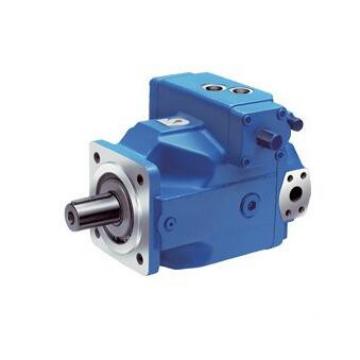 USA VICKERS Pump PVH131R13AF30B252000002001AB010A
USA VICKERS Pump PVH131R13AF30B252000002001AB010A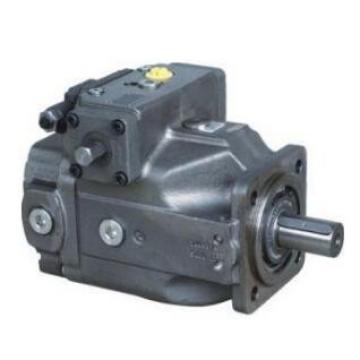 Parker Piston Pump 400481002108 PV140R1K1B4NWLZ+PGP517A0
Parker Piston Pump 400481002108 PV140R1K1B4NWLZ+PGP517A0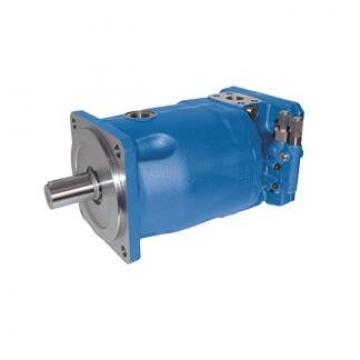 Parker Piston Pump 400481003286 PV180R1K1A4NYCD+PGP511A0
Parker Piston Pump 400481003286 PV180R1K1A4NYCD+PGP511A0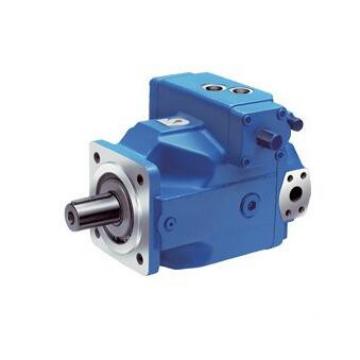 USA VICKERS Pump PVH057R02AA10B25200000100100010A
USA VICKERS Pump PVH057R02AA10B25200000100100010A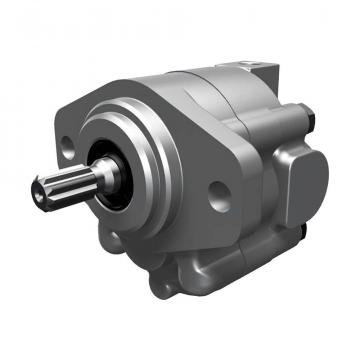 Parker Piston Pump 400481004166 PV270R9K1B4NYLZK0033+PVA
Parker Piston Pump 400481004166 PV270R9K1B4NYLZK0033+PVA